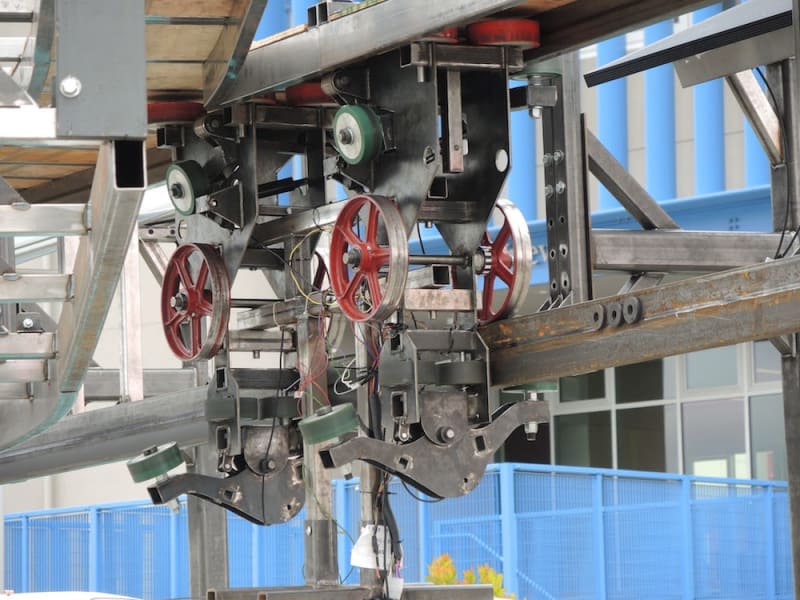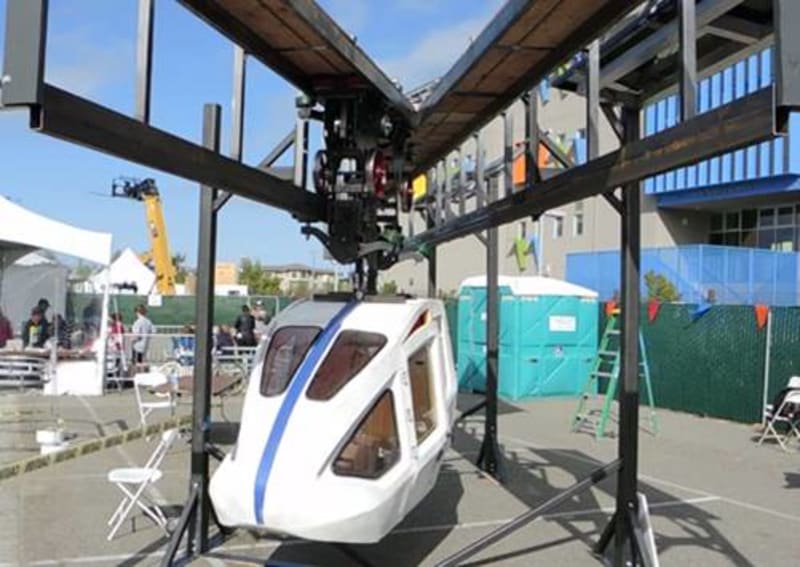According to the National Highway Transportation Safety Administration in 2015 there were 28,671 deaths due to automotive incidents in the United States. Additionally there were 6,421 pedestrians killed by vehicles. The Texas Transportation Institute has calculated that traffic congestion in the U.S. has wasted 5.7 billion gallons of fuel and $67 billion of lost economic productivity in the year 2000. The EPA found our current transportation infrastructure produces over 1.5 billion metric tons of CO2 each year.
The Spartan Superway is a solar powered automated rapid transit ascendant network (SPARTAN) that is comprised of a network of relatively slim overhead guideways that suspend a fleet of automated vehicles which can carry up to six passengers. The network uses offline stations, so that passengers can travel from origin to destination without intermediate stops and vehicles can be on demand rather than on fixed schedules. A mobile application or in-station kiosks can be utilized to call a vehicle instantaneously. The guideway is supported by columns having a footprint like lampposts, and can be easily located in existing rights of way, or along sidewalks, or even into buildings. Because the network is elevated and vehicles are suspended below it, the upper surface of the guideway can be covered with solar panels. It is possible to size the solar canopy so that the amount of solar energy captured could exceed the energy required for the entire system. The whole system can therefore be energy independent, move people faster from origin to destination, and offer unparalleled safety compared to current methods.
The Spartan Superway is different from other railed mobility systems in that there are no moving elements in the guideway. The switching mechanism is contained in the vehicle, and this allows for much higher passenger throughput and more flexible routes.
Manufacturability
The guideway elements utilize a novel, modular, steel-composite construction formed from sheet metal, which results in a low-cost, readily fabricable structure that can be assembled like Meccano pieces. The design philosophy uses poka-yoke principles, which allows unskilled labor to assemble the guideway with only a small amount of training.
Marketability
Fuel costs the average driver 11¢ per mile. Cars in major cities only have an average speed between 17-30 mph depending on the city and even less during rush hour. The Spartan Superway is estimated to cost about 6¢ per mile with a comparable average speed at all times, and with zero emissions. The Superway network is also orders of magnitude safer, and does not require the user to do any form of operating, which will convert commute time into productive or stress free time.
Like this entry?
-
About the Entrant
- Name:Andrew Snytsheuvel
- Type of entry:teamTeam members:
- Software used for this entry:Solidworks
- Patent status:none








